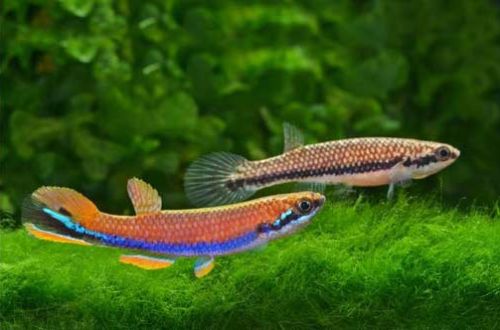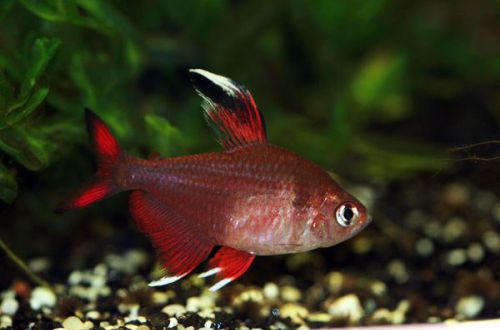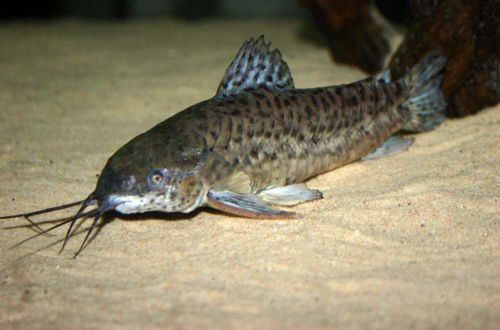
Rivulus bluestripe
Rivulus blue-striped, scientific name Laimosemion xiphidius (obsolete Rivulus xiphidius), belongs to the family Rivulidae (Rivulaceae). Comes from South America. Found in the Oyapoc River basin in French Guiana. Inhabits shallow areas of small rivers flowing through tropical rainforest. The water has a rich brown hue due to the high concentration of tannins formed as a result of the decomposition of plant organic matter.

Contents
Description
Adults reach a length of about 4 cm. The fish have a slender body with rounded fins. Males, unlike females, have a bright color with a predominance of orange flowers, with a wide blue stripe running along the body and several turquoise, black strokes.
The females are grey, and instead of a blue stripe, a black line runs along the body.
Sexual differentiation becomes noticeable in fry from the age of 3 months.
Unlike most other Killyfish, the blue-striped Rivulus is not a seasonal species. In favorable conditions in captivity can live more than 3 years.
Brief information:
- The volume of the aquarium – from 40 liters.
- Temperature – 22-25°C
- Value pH — 5.0–6.0
- Water hardness – 4–9 dGH
- Substrate type – soft silty, based on peat
- Lighting – subdued
- Brackish water – no
- Water movement – little or no
- The size of the fish is about 4 cm
- Food – any food
- Temperament – peaceful
- Content – in a group of 4 fish
Maintenance and care, arrangement of the aquarium
It is considered very difficult to keep and breed. It is necessary to provide conditions as close as possible to the natural habitat.
For 3-4 fish, an aquarium of 40 liters is enough. The design uses a large number of aquatic plants, soft ground, covered with a layer of leaves and snags of some trees. The lighting is dim.
The hydrochemical composition of the water should have low pH and dGH values at a temperature in the range of 22–25°C.
In nature, when attacked by a predator, a fish jumps out of the water onto land, where it can stay for some time before returning back to the water. This feature, coupled with shyness, can lead to the fact that Rivulus bluestripe will regularly jump out of the aquarium. To prevent this, a large number of floating plants should be placed in the aquarium and a reliable cover should be provided.
Food
Features of the diet are individual from each batch of fish. Some suppliers are adapting Bluestriped Rivulus to dry food alternatives, others are feeding exclusively live foods (small invertebrates). The basis of the diet should be consistent with what the fish were previously fed.
Behavior and Compatibility
Males compete with each other for the attention of females. For long-term maintenance, it is recommended to maintain a ratio of 1:3, i.e. one male to three females.
Peaceful in relation to other species of comparable size, able to live in a similar environment. These can be small characins, such as tetras, neons, as well as miniature cyprinids, such as rasboras.
Breeding / breeding
Sexual maturity is reached by 10 months. An unproductive species that lays only a few dozen eggs during the spawning season. For such a small fish, the size of the eggs is quite large – 2 mm in diameter.
Breeding is complex and only experienced professionals can do it. Difficulties arise with the stimulation of spawning. It is necessary to regularly replace part of the water with fresh water – an imitation of the rainy season, and the supply of live feed. The wrong diet will cause the fish to eat their own caviar.
No less problems will be delivered by the preservation of the fry that have appeared. Again, the main difficulty is choosing the right food. Professional breeders use brine shrimp nauplii to which they add a few drops of liquid vitamins before feeding them to the fry.





